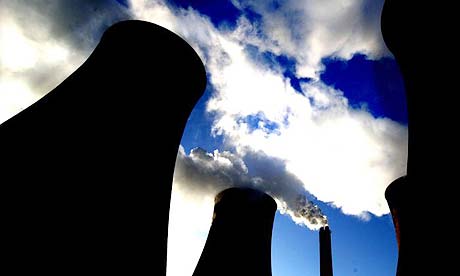
Why new U.S. biofuel legislation is on track to waste billions of tax dollars, while subsidizing oil consumption
Harry de Gorter, like David Just a Cornell professor of applied economics and management, advises the U.N.'s Food and Agriculture Organization and the World Bank on issues related to the impact of biofuels on food security and global warming. He is also involved in talks on biofuels in the Doha negotiations and in World Trade Organization trade disputes. Just studies the use of information and, more particularly, how differences in human capital and information availability affect decisions.
New U.S. energy legislation mandates the use of renewable fuel but calls for continuing current biofuel subsidies that will cost taxpayers billions of dollars. The subsidies -- tax credits -- by themselves encourage ethanol production as a replacement for oil-based gasoline consumption. Instead, the tax credits will play a major role in unintentionally subsidizing gasoline consumption. This contradicts the new energy bill's stated objectives of reducing dependency on oil, improving the environment and enhancing rural prosperity.
Biofuels, particularly ethanol, are under increased scrutiny because of ethanol's use of crops, such as corn, at a time of rapidly escalating worldwide food prices. There are also doubts over whether biofuels mitigate carbon dioxide (CO2) emissions when indirect land use is taken into account. But one key issue that has been overlooked in all of this debate is how the new Renewable Fuel Standard in the recently passed Energy Independence and Security Act mandates the use of 36 billion gallons of renewable fuel by 2022. In fact, the new energy legislation will unintentionally reverse the effects of the existing biofuel government subsidies in the form of federal and state tax credits, totaling about 57 cents per gallon. The resulting taxpayer costs, exceeding $20 billion per annum, will be completely wasted.
The new legislation will, therefore, not improve energy security nor help the environment or farmers.
The effects of current policy are mind-boggling and will have profound consequences beyond wasted tax dollars. Transfers of wealth to the Middle East will increase, leading to even more dependence on oil and energy insecurity. Air quality will decline while CO2 emissions will increase. Meanwhile, the resulting rise in oil prices hurts farmers through higher input costs, while ethanol prices are unchanged as ethanol consumption remains at mandated levels.
The unintended result caused by a tax credit becoming a gasoline subsidy in the presence of a government mandate is easily explained. By themselves, tax credits enable blenders of ethanol and gasoline to take advantage of the government subsidy by bidding up the price of ethanol until it is above the market price of gasoline by 57 cents a gallon.
Now consider the case where the ethanol price is determined by the binding mandate -- 36 billion gallons by 2022 -- and there is no tax credit. The consumer "fuel" price is a weighted average of the ethanol and gasoline prices. Implicitly, consumers pay a higher price for gasoline to finance the same ethanol production as before, when only the tax credit was in place.
Now introduce a tax credit alongside the mandate: Because the ethanol price premium, due to the mandate, exceeds the tax credit, there is no incentive for blenders to bid up the price of ethanol as before. And market prices of ethanol cannot decline due to the mandate. Instead, blenders will offer a lower total fuel price -- ethanol plus gasoline -- to consumers to take advantage of the tax credit offered to them by the government. The lower price increases gasoline consumption and thus increases the market price of gasoline and oil.
Due to the unique way in which mandates reverse the market effects of a tax credit, the intentions of policy-makers cannot necessarily be faulted. There is no other example in the economics literature of the interaction between a price-based and quantity-based policy measure that generates such a unique result as that of a biofuel tax credit and mandate.
Furthermore, this policy mistake is not unique to the United States but is a worldwide error of judgment as most countries use both mandates and tax credits simultaneously. The policy implication is clear: allow the mandate to work by itself, so eliminate the tax credits and save billions in taxpayer monies. This involves only a modest change in biofuel policy while dramatically improving policy achievements.


